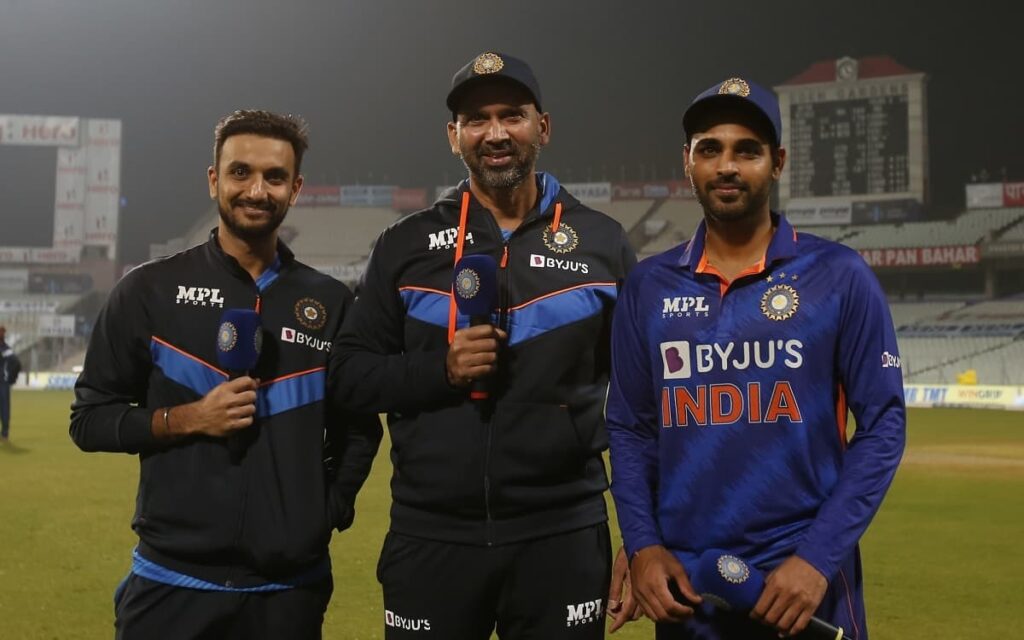Table of Contents
Having won the inaugural T20 World Cup in South Africa in 2007, India look ahead to the eighth edition, beginning October 16 in Australia, in search of an elusive second.
They are already missing the services of two of their key players in the competition, and while they have won each bilateral series since the completion of the last year’s T20 World Cup, the Rohit Sharma-led side still has areas to look upon.
Here’s a look at areas of concern for India ahead of T20 World Cup 2022.
Jasprit Bumrah’s replacement
India’s T20 World Cup hopes have taken a significant hit, with Bumrah ruled out of the competition, having sustained a back injury. His absence leaves a void of a strike-bowler, potent to deliver a wicket at any given stage in the game while also stemming the run-flow.
The selectors and the BCCI have chosen to play the waiting game on naming the replacement, with Mohammed Shami, Deepak Chahar and Mohammed Siraj being considered the likely candidates, the former two being among the four travelling reserves.
Shami, despite an underwhelming T20I record offers the experience and the versatility similar to Bumrah, but with him having just recovered from COVID-19 and having played little cricket of late doesn’t quite inspire confidence. Chahar offers extra dimension with his resourceful batting, while Siraj will closely be observed during the ongoing ODI series against South Africa.
Death bowling woes
India might have defeated Australia and South Africa at home recently, but the death bowling woes surfaced throughout, as had been the case in the team’s disappointing run at the Asia Cup. Bumrah’s absence adds further to the woes, with Bhuvneshwar Kumar and Harshal Patel too, having struggled of late.

Harshal’s approach and form attracted debates and criticism, but he could be a beneficiary of the larger ground dimensions in Australia. Arshdeep Singh has certainly risen through the ranks and has been impressive at death in recent times, but would need enough support from the other end, especially while playing his first ICC tournament.
Yuzvendra Chahal’s form
Leg-spinners have been one of the most sought after species in T20 cricket, and Yuzvendra Chahal has been a proven match-winner for India and in franchise cricket over the years. However, the 32-year-old has struggled in recent times for wickets and was expensive in the first two T20Is against Australia before redeeming himself in the decider.
Against the conventional notion that pacers rule the bowling units in Australia, spinners too, have played a significant role, as Adam Zampa has shown for the hosts in recent years.
Ravichandran Ashwin offers experience and batting lower down the order, but India are unlikely to go that route at the start of the competition, given wrist-spinners’ traditional success in the format. And so, Chahal, India’s joint highest wicket-taker in T20Is, would need to redeem his wicket-taking abilities to add substance to the bowling unit.
Batting depth – can India recover from 5/3 or 6/2?
India’s batting has been in fine form of late, with Suryakumar Yadav, the second-ranked batter in the ICC Men’s T20I rankings, leading the way. Rohit, KL Rahul and Virat Kohli have been among the runs, while Hardik Pandya and Dinesh Karthik’s consistency completes a highly promising line-up.
However, India have been dented by untimely collapses against the new-ball in the past, as was the case in the 2019 World Cup semi-final against New Zealand and at the T20 World Cup against Pakistan and the Blackcaps last year.
The batting came creaking thereafter, failing to deliver a match-winning total in conditions aided for run-chases. While Australian venues do somewhat eliminate the toss advantage, India would still need to be prepared to resurrect an innings, should they come against quality fast bowling first up, especially while setting a total.
Fielding unit
The recency effect of Bumrah’s injury and Axar Patel’s brilliance with the ball has somewhat overshadowed Ravindra Jadeja’s absence from the squad, with him missing out with a knee injury. As brilliant Jadeja has been with the bat and ball in recent times, his fielding has been of great value for the team regardless of the format and game situation. Without him, India lacks a fielder who can produce a wicket on his own in a challenging phase, and lift the team.
The dropped chances in recent home series don’t promise encouraging signs either, and the challenge stiffens on large outfields Down Under. It’s a facet of game India haven’t necessarily excelled in recently, and they’d be aware of that ahead of a major competition.


